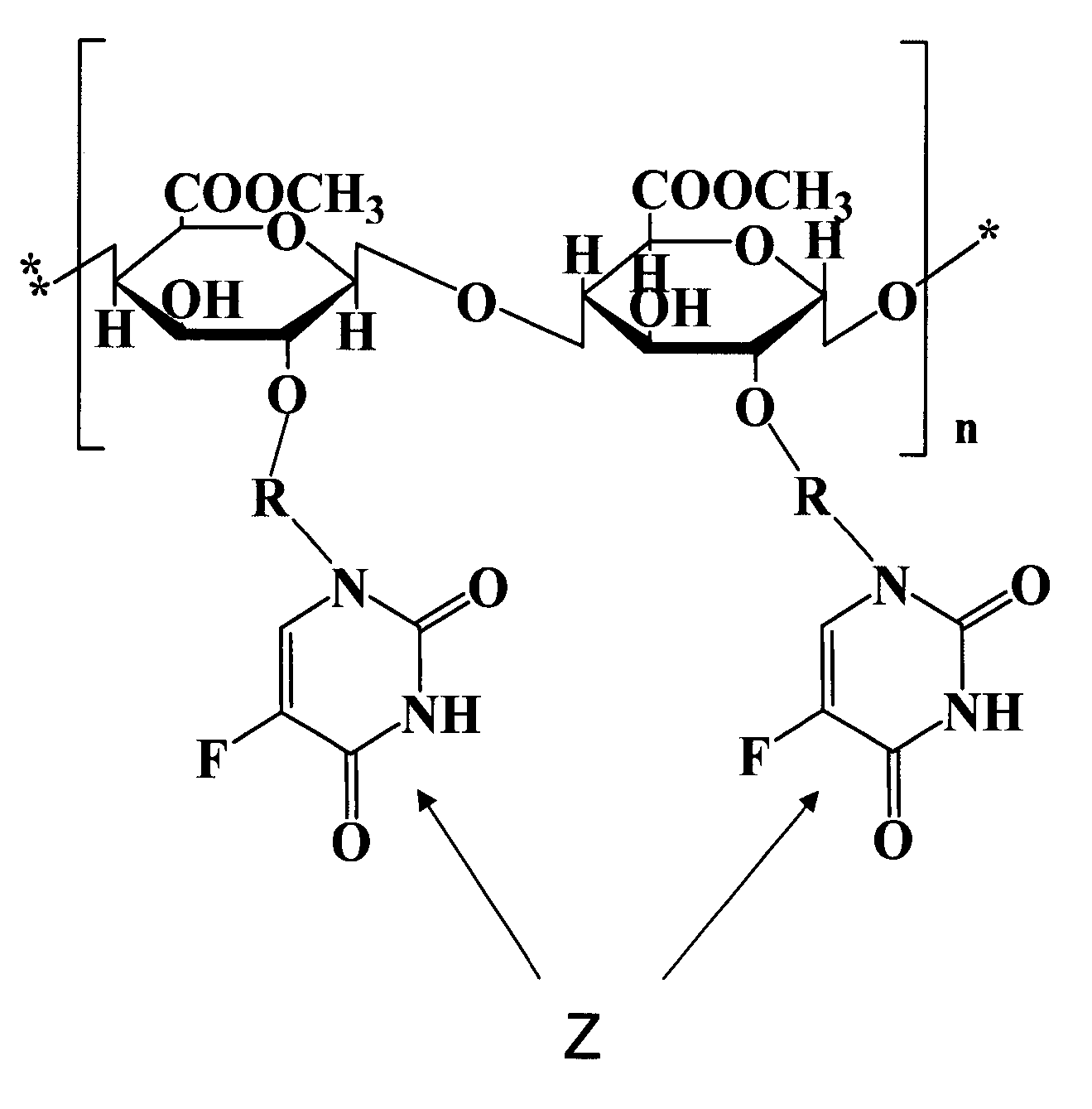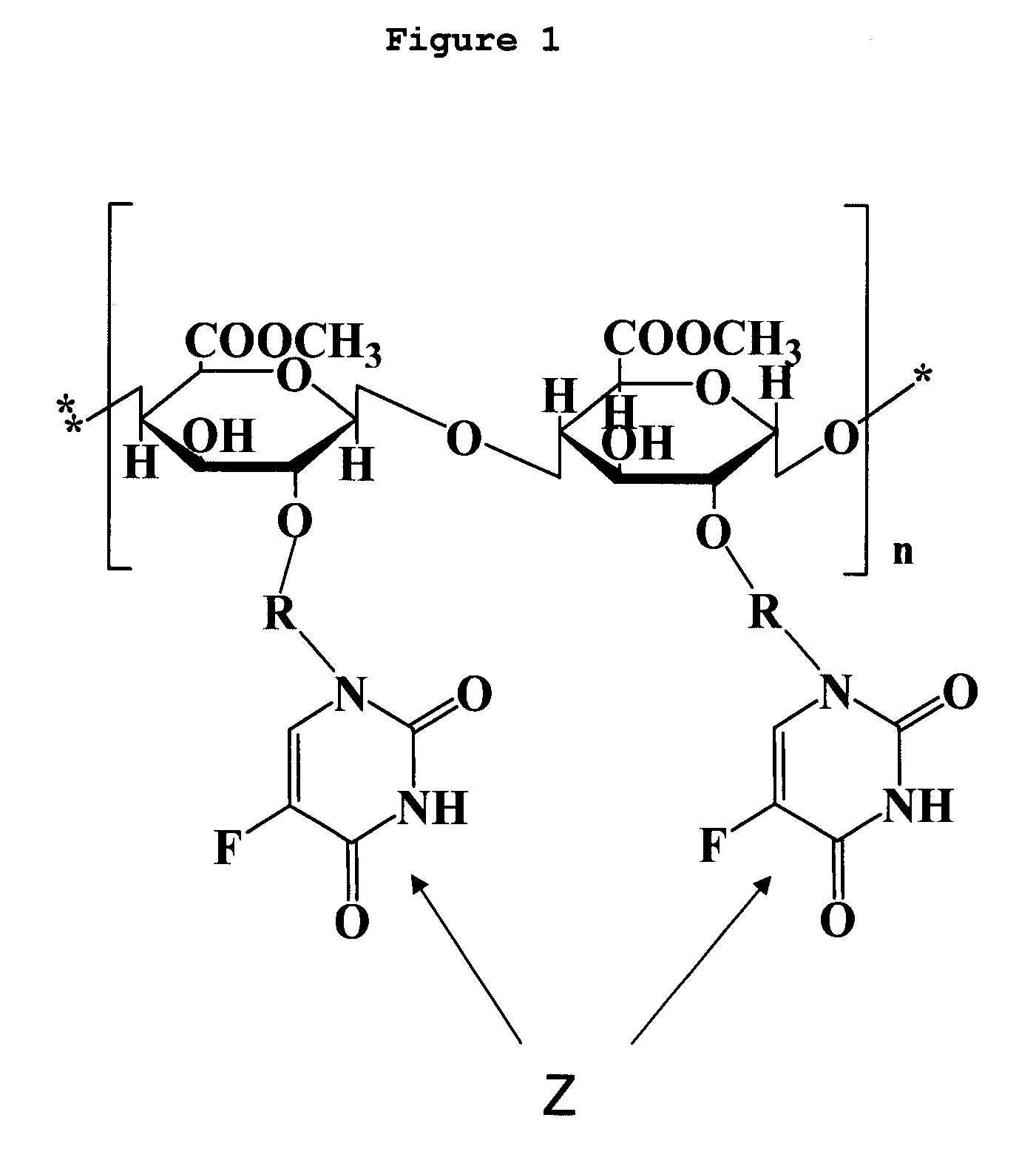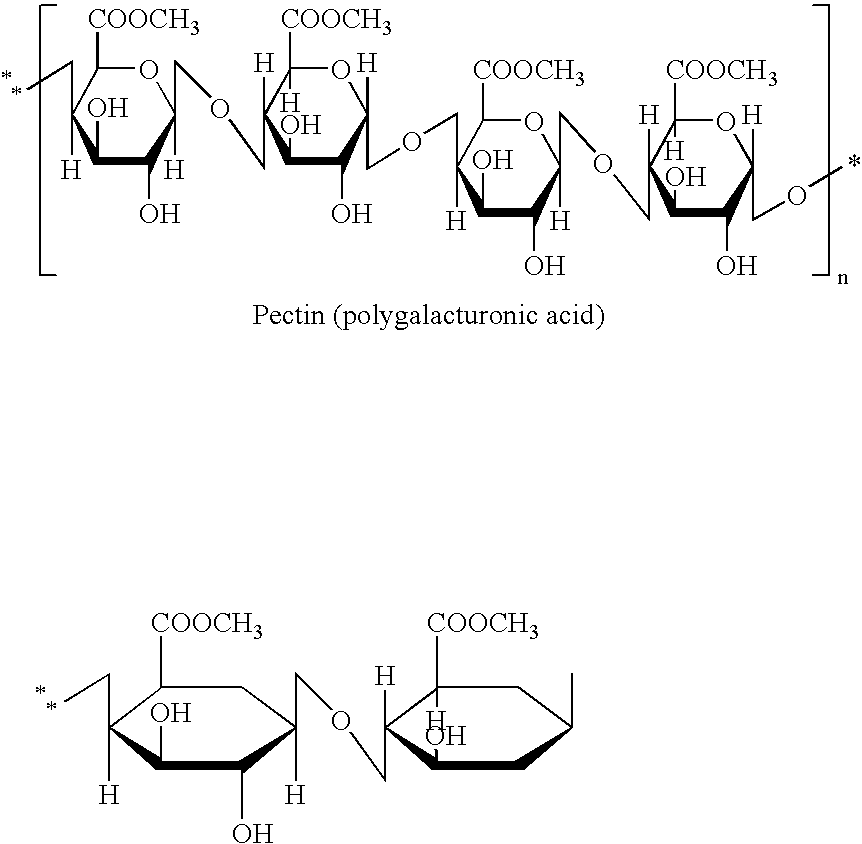Novel polysaccharide pro-drug 5-fluorouracil (5-FU) with enhanced target specificity for colorectal cancer and its preparation methods
a colorectal cancer and target specificity technology, applied in the field of colorectal cancer drugs, can solve the problems of limited dose a patient can receive, patients are so sick, and cannot be fully effective, so as to improve the safety profile, enhance the therapeutic effect of 5-fu, and increase selectivity
- Summary
- Abstract
- Description
- Claims
- Application Information
AI Technical Summary
Benefits of technology
Problems solved by technology
Method used
Image
Examples
example 1
[0086] Add 1.2 g of pectin into 52.5 g (0.56 mmol) of melting chloroacetic acid and stir it in solution under 70° C. constant temperature, and then add 35 ml of acetic anhydride. Stir it for 3 hr at a constant temperature of 70° C., pour the solution into a large amount of ice water, forming a yellow precipitate. Separate out the yellow gel-like precipitate, wash it thoroughly with water and ethanol respectively in sequence, collect the precipitate by filtration, and dry it under vacuum at 40° C. for 24 hr to obtain a grayish yellow powder of chloroacetyl pectin.
[0087] Weigh 0.38 g of this chloroacetyl pectin and add into 20 ml of dimethyl sulfoxide (DMSO), stir it under 60° C. until it is dissolved. Then put a mixture of 0.65 g of 5-FU and triethylamine into the above-mentioned solution, stir it for 24 hr under 60° C. constant temperature, and then pour the solution into 100 ml of anhydrous mixture ethanol-ether (1:1 ratio) to produce a loose fluffy precipitation. Let it stand sti...
example 2
[0088] Dissolve 3.92 g of 5-FU and 3.65 g of sodium hydroxide (NaOH) in 22 ml of water, add 12 ml of aqueous solution of 3.30 g of chloroacetic acid, maintain at pH 10, reflux for 2 hr, and acidify the solution using concentrated HCl to obtain a light brown precipitate. Recrystallize it to obtain 2.26 g of white solid with a yield of ˜40%.
[0089] Dissolve 0.5 g of carob bean gum in 20 ml of DMSO, add 0.25 g of N,N′-dicyclohexylcarbodiimide (DCC) and 15 mg of 4-dimethylaminopyridine (DMAP), and then add 0.5 g of 5-Fu-1-acetic acid, stirring for 24 hr at 40° C. At completion, pour the reaction mixture into ethanol forming a jelly-like substance. Filter off the jelly-like substance, rinse it with methanol, and then dry under vacuum to obtain final product.
example 3
[0090] Add 1.0 g of 5-FU in 20 ml of pyridine and stir thoroughly to dissolve the contents into solution. Cool it down to 0° C. in an ice water bath. Add 2 ml of trichloromethyl chloroformate (TCF) slowly dropwise into this 5-FU pyridine solution over 30 minutes. Stir reaction continuously for 1 hr. Remove reaction mixture from the ice water bath. While continuously stirring, allow reaction mixture to warm to room temperature over 2 hr, and then heat reaction mixture to 40° C. and let reaction continue for 30 minutes. Reduce the pressure to remove the unreacted phosgene and pyridine to obtain the brown solid product of chloroformyl 5-FU. Rinse the product with tetrahydrofuran (THF), filter it by vacuum, and dry it by vacuum drying for 6 hr.
[0091] Weigh 1 g of guar gum and dissolve it in 20 ml of DMSO. Add 5 ml of pyridine, stir, and heat the mixture to 40° C. Allow the contents to be dissolved thoroughly, add the chloroformyl 5-FU, stir continuously at room temperature for 24 hr, t...
PUM
| Property | Measurement | Unit |
|---|---|---|
| molecular weight | aaaaa | aaaaa |
| molecular weight | aaaaa | aaaaa |
| molecular weight | aaaaa | aaaaa |
Abstract
Description
Claims
Application Information
 Login to View More
Login to View More - R&D
- Intellectual Property
- Life Sciences
- Materials
- Tech Scout
- Unparalleled Data Quality
- Higher Quality Content
- 60% Fewer Hallucinations
Browse by: Latest US Patents, China's latest patents, Technical Efficacy Thesaurus, Application Domain, Technology Topic, Popular Technical Reports.
© 2025 PatSnap. All rights reserved.Legal|Privacy policy|Modern Slavery Act Transparency Statement|Sitemap|About US| Contact US: help@patsnap.com



